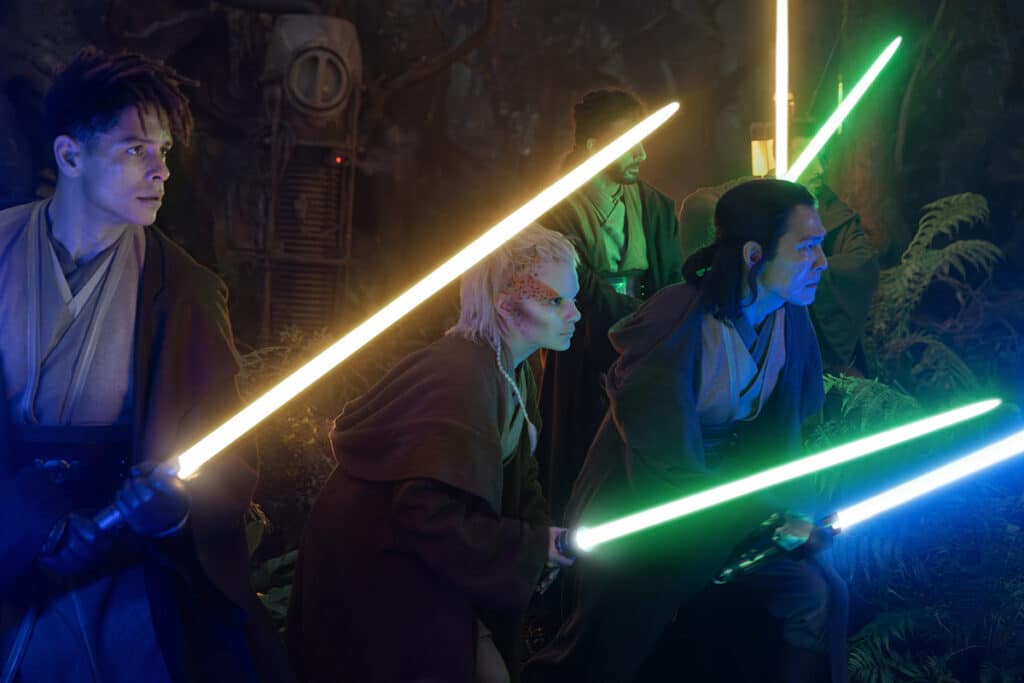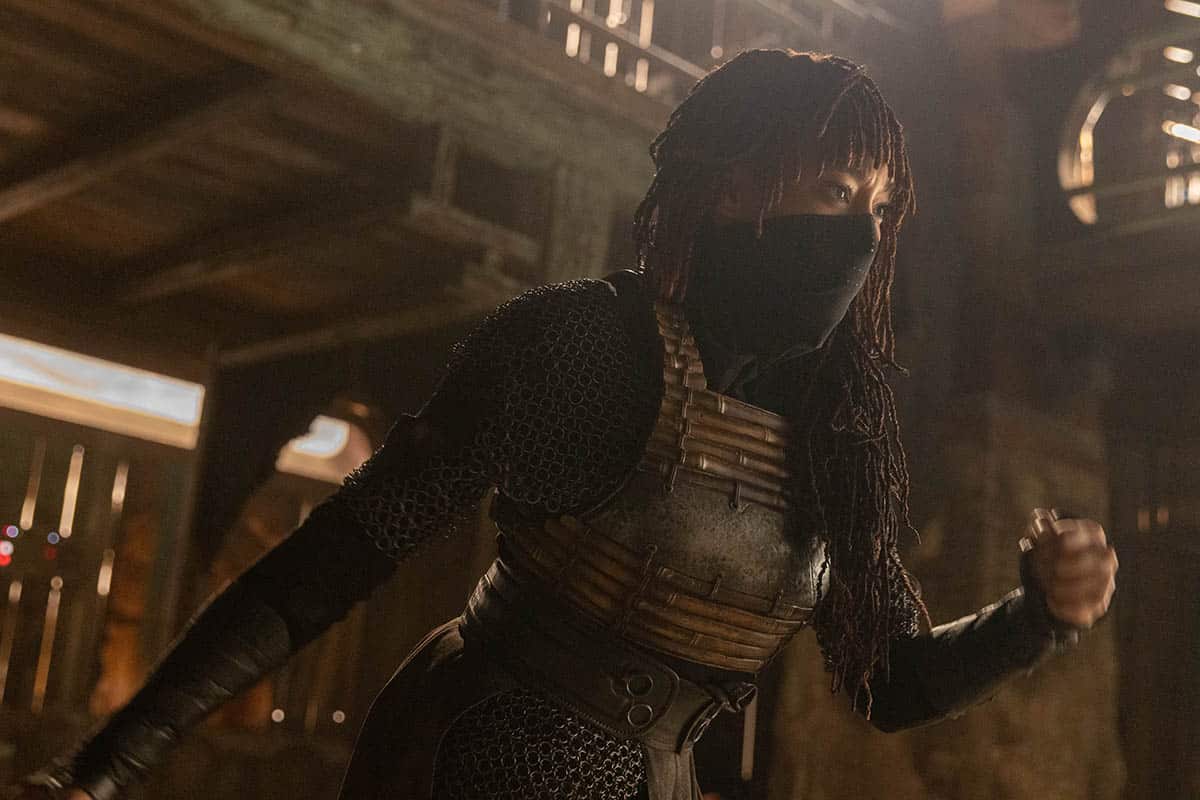The latest addition to the Star Wars franchise, The Acolyte seamlessly blends timeless experiences and themes with familiar contemporary issues, creating a narrative that’s equal parts fantastical and relatable. While some dialogue misses, the characters bring the story alive as it explores coming-of-age, prejudice, and power.
Created by Leslye Headland, known for Russian Doll and About Last Night, the series unfolds in the twilight of the High Republic era and follows Osha (Amandla Stenberg, Bodies Bodies Bodies, The Hate U Give), a young woman tormented by her tragic past, whose life gets upended when Jedis start turning up dead. With the help of caring and wise Jedi Sol (Lee Jung-jae, Squid Game, New World) and the distrustful and by-the-book Jedi Yord (Charlie Barnett, Russian Doll, You), Osha realizes the twin sister (Mae, also Stenberg) she thought she tragically lost when they were young is alive and hell-bent on payback. While The Acolyte ties into the larger Star Wars universe, it exists wonderfully and uniquely on its own, inviting everyone to enjoy what the series offers.
The Acolyte Highlights Hypocrisy That Mirrors Life

The central conflict at the root of Mae’s revenge stems from how Jedis—among others—view witches and what it costs them. There are only women in this cult, save for two kids, twin sisters Mae and Osha. But why are certain groups forbidden to train children in their customs, yet the Jedi can take children away if they have the talent to become Jedi? The assumption that the witches are a threat parallels how others assume that Jedis are good. As such, the witches face restrictions, while the Jedi can take kids away from their families permanently. One can even argue a comparison to a cult—indoctrinating young, no contact with family.
The double standard feels all too familiar nowadays. Some are allowed to defend their land and lives while others are not. It’s less a hate between the Jedi and the witches and more distrust. Whether a group is labeled good does not immediately lead to every choice they make being the right one. The Acolyte nails the characters’ complexities in the first four episodes, highlighting a nuanced human experience where it’s less about right and wrong and more about choices and living with them.
Duality Between Osha and Mae

While arguably, Osha is light and Mae is her counterpart, there’s more between the pair. The Acolyte emphasizes the flip side in their commonalities. Both harbor anger and a refusal to let go of their past. But Mae executes a goal to do something about their losses. Meanwhile, Osha’s pain and anger fester within her, preventing her from living or pursuing her dream. Although perhaps neither knows the entire story, The Acolyte highlights the aftermath and methods for handling loss, including avoidance.
The Acolyte also nails the struggle for identity. While Mae is happy with the witches, led by their mother, Mother Aniseya (Jodie Turner-Smith, Sex Education, After Yang), Osha yearns for something different. As kids, they struggle to express how they feel and as adults, they’re still working on figuring out how they are as sisters and individuals.
All in all, The Acolyte works because of the series’ broader human struggles, using emotional beats to draw viewers in. Amandla Stenberg does compelling work moving between both characters, even if one particular line she utters will always make me think of Kill Bill. The Acolyte is fun with its hand-to-hand combat mixed with the Force maneuvers and the stunning vistas of worlds and landscapes common in Star Wars. While it’s unclear if the series will stick the landing, the first four episodes are a fantastic start to a promising series.

